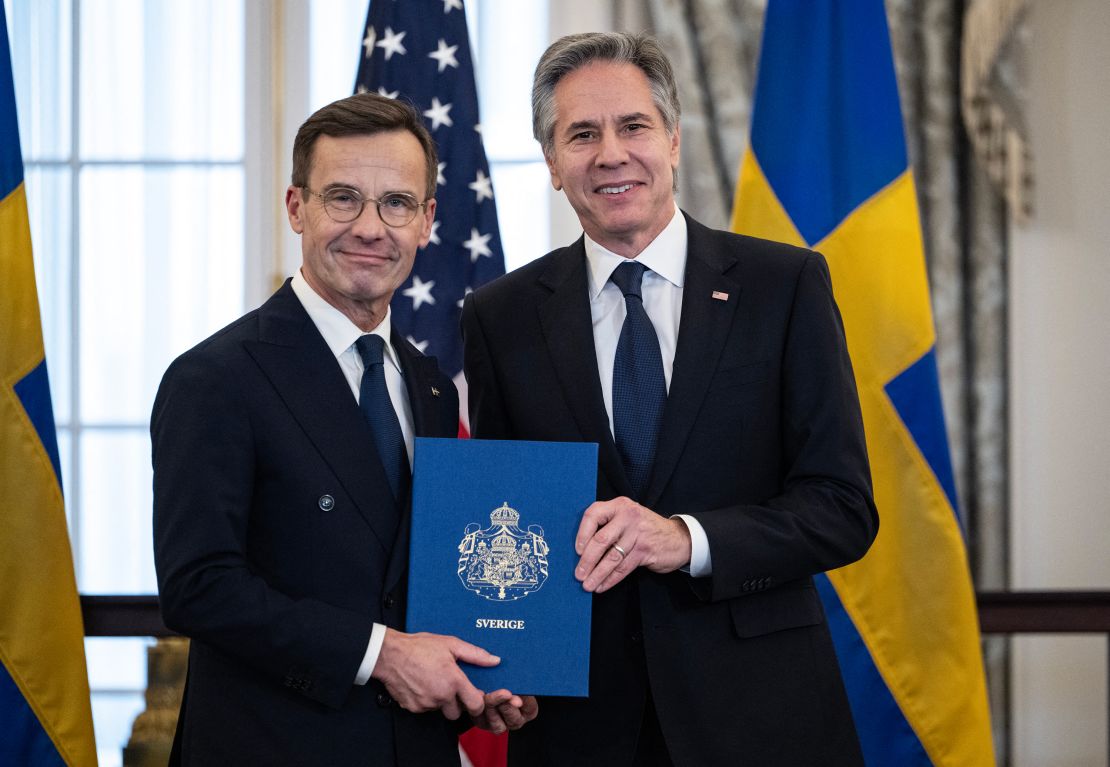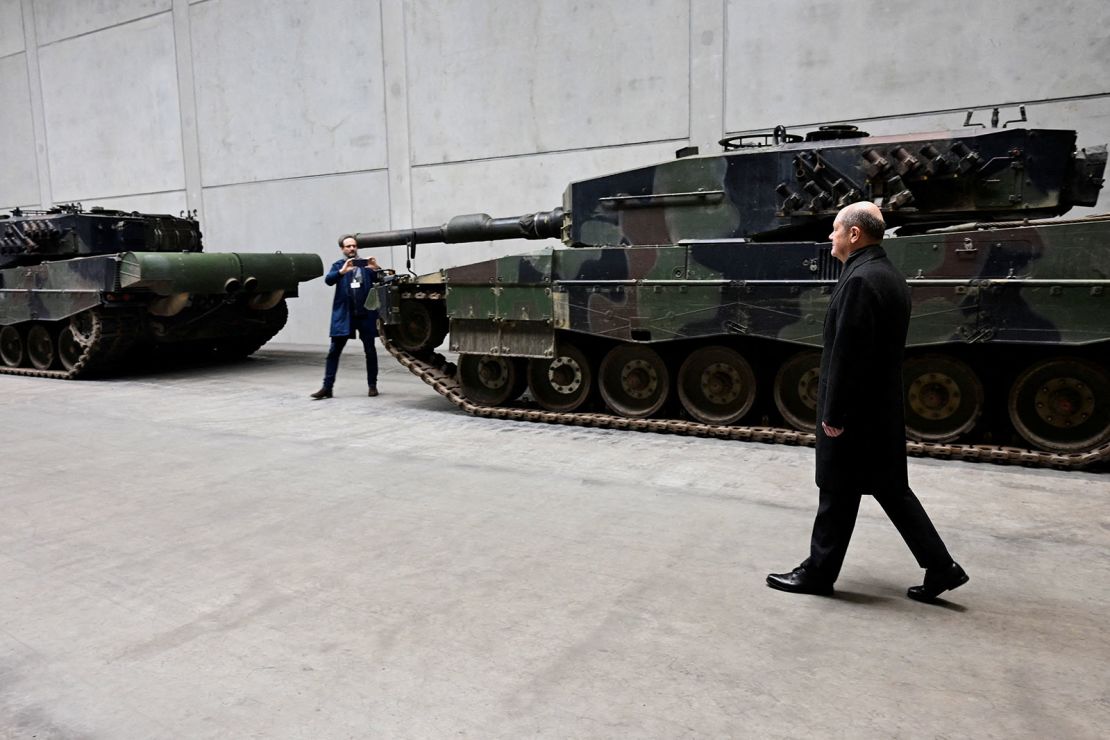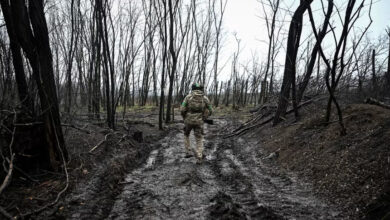
First, there was the Cold War and the Soviet threat. Act Two came in the 1990s and 2000s, when NATO deployed troops for the first time in Bosnia and Kosovo, followed by Afghanistan and Iraq. From 2014 onwards, Russian President Vladimir Putin’s first invasion of Ukraine and ISIS’s self-proclaimed caliphate brought armed threats right back to the alliance’s borders at a time when the United States and its allies were slowly retreating from the world.
NATO’s fourth act may be defined by a crisis that has unfolded in slow motion. For over a decade, allies have chronically underspent on defense while the West’s adversaries modernized and bolstered their own military capabilities.
The most obvious way to understand the impact of this is through Russia’s 2022 full-scale invasion of Ukraine.
Of course, the person most responsible for Russia’s invasion is Putin himself. But people directly involved in Western security policy say that warnings of the need to improve defenses were overlooked in favour of balancing books in the wake of the 2008 financial crisis.

Rasa Juknevičienė, Lithuania’s defense minister from 2008-2012, recalls a meeting with US officials at the Pentagon in 2012 where individuals “from all sides, including the US, acknowledged that Russia would be in a position to test NATO by 2019.”
Despite knowing of the risk, by 2014, only three of the then 30 allies were able to meet NATO’s target of 2 percent of GDP on defense spending. By 2019, that number had risen only to seven.
Speaking to CNN, Juknevičienė, now a European Parliament member, said: “NATO was sleepy in the 2010s, focused on the war on terror rather than regional threats. Defense spending stayed low across the West not just because of budget pressures, but also because everyone – including the US – was frightened to provoke Russia.
“In my opinion, that meant Russia could see NATO was not serious about its own defense, which made invading Ukraine far less intimidating.”
Underfunding defense budgets over a long period has multiple consequences – from lower troop numbers to poorly maintained equipment. But in the context of the war in Ukraine, limited and fast-dwindling ammunition stocks for the West to give to Kyiv has possibly been the most damaging.
“One thing that’s absolutely certain, if allies in Europe had met their 2 percent target – in particular, Germany – there would be a lot more weapons to give Ukraine without weakening the defense of their own countries respectively,” John Herbst, the former US ambassador to Ukraine, told CNN.

“Maybe if there were more weapons there would have been more of a deterrent to Putin,” he added.
It’s worth noting that it was not NATO’s job to protect Ukraine from invasion. Ukraine is not a NATO member and only formally declared its intention to join after the 2022 invasion.
However, the nature of NATO allies’ support for Ukraine – much of it direct military support – has exposed the vulnerability that years of underfunding has caused the alliance.
It’s not just that low military spending means low weapon stocks. A lack of demand means no incentive for private arms companies to invest in weapons manufacturing. In other words, you can have all the money in the world, but you cannot buy weapons that don’t exist. Meanwhile, Russia has massively expanded its own munitions production and has turned to Western adversaries including North Korea and Iran for additional weapons.
“There is no question the US and its allies do not have arms industries producing enough equipment for a major-power war,” said Herbst.
This has been acknowledged by NATO’s members. More allies than ever before are now meeting the 2 percent minimum spending commitment, and that is set to increase ahead of a summit in Washington in May – an event to mark the 75th anniversary of NATO’s creation on April 4, 1949.
NATO officials, often cynical, skeptical types, are unusually optimistic that the governments of so many are taking spending – particularly on arms procurement – more seriously.
The bloc’s leader, Jens Stoltenberg, said in February that 18 of its members were expected to spend at least 2 percent of their GDP on defense this year.
Billions of dollars have been pledged, as well as schemes by individual nations to purchase and ramp up the production of ammunition and weapons. But most of the plans being drawn up by officials are in reality longer-term – it takes time to build factories and train staff.

This means that the challenge in front of NATO allies now is not just how can they meet the demand for weapons coming from Ukraine, but how do they reverse years of underfunding their own defenses?
European diplomats, particularly from Baltic countries, often describe the need not merely to fill up the shed that’s been emptied by giving weapons to Ukraine, but to also build a new shed that, too, needs its own weapons.
So even with the new spending pledges, it will still take a very long time to get where most European defense officials now acknowledge ammunition stocks should be.
One person acutely aware of this is Stoltenberg himself. Speaking Wednesday in Brussels ahead of a NATO foreign ministers’ meeting, the secretary general said NATO “could assume more responsibility for coordinating military equipment and training for Ukraine.” Stoltenberg added that allies should “commit to more support for Ukraine and rely less on voluntary contributions.”
“We must have an assured, reliable and predictable security assistance to Ukraine,” he said.
Peter Ricketts, the UK’s former ambassador to NATO, told CNN that while more countries meeting the 2 percent mark is undeniably a good thing, “new money takes years to turn into capability. And it’s not enough now that the threat has increased in Europe. Especially given the risk of a future Trump presidency drawing back from Europe.”
The situation NATO finds itself in at 75 is unusual. On one hand, it can be argued that things are rosier than they have been for a long time. Countries are relatively united on what needs to be done in the long term and are broadly willing to pay for it. New initiatives on things like rapid response forces, training exercises and troop deployments are being coordinated centrally.
The alliance has even expanded, with both Finland and Sweden joining its ranks in the past year.
Douglas Lute, former US ambassador to NATO, told CNN: “I think the glass is half full, rather than half empty. I think on a map of the world, the NATO territorial border is the brightest red line, and allies are making it brighter through new initiatives. If you ask if NATO is strong enough to deter Putin from a direct attack, I’d say we should judge his capabilities and his intentions. The fact is Putin has respected NATO’s borders.”
However, old resentments linger. Some allies don’t trust that others will be quite so generous with defense spending if the Russia-Ukraine war were to end. And officials from countries that have historically met their commitments still view their counterparts as freeloaders who might not learn the lessons of this war, on their doorstep.




